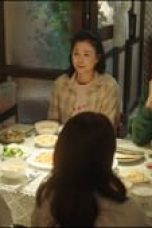- Source: Aso oke
Aso oke fabric, (Yoruba: aṣọ òkè, pronounced ah-SHAW-okay) is a hand-woven cloth that originated from the Yoruba people of Yorubaland within today's Nigeria, Benin and Togo. Usually woven by men, the fabric is used to make men's gowns, called agbada and hats, called fila, as well as Yoruba women's wrappers called Iro and a Yoruba women's blouse called Buba and a gown called Komole, as well as a head tie, called gele and so on.
Aso oke is from the Yoruba culture in Kwara, Kogi, Ondo, Oyo, Ogun, Ekiti, Lagos, and Osun States in western Nigeria
The way of making the cloth has remained the same for centuries, however new techniques and production methods have been looked into to eliminate the weight and thickness of the aso oke cloth. Lighter fabrics make this garment more accessible for casual wear, as many of the locally woven aso oke were unsuitable for certain climactic conditions.
Types of aso oke
Other ways that designers have made this old traditional cloth become more modern is to "structurally manipulate and combine animal and floral motifs into definite shapes of grids and geometry, suitable for computer design applications." The basis of more traditional motifs would have originated from fables and folklore.
Sanyan type: woven from anaphe wild silk and cotton yarns. The sanyan type typically comes in a tan or brown color.
Alaari type: woven with either synthetically or locally grown cotton and shinning threads, sometimes with perforated patterns. The alaari is usually made in a deep red or vibrant purple.
Etu type: bears dark indigo colours with tiny white stripes noted for their simplicity.
Opa aro: a dark blue woven cloth in solid colour broken with a stripe of green.
Ifun or fu: a combination of light brown and navy blue woven cloth.
Waka: a woven cloth of solid black background with one or two warp stripes of red.
Aso-ipo, ifale, abata, and aponuponyin which are red woven clothes
Aso Oke comes in various different colours.
Aso oke fabrics can also be worn with other Yoruba fabrics, like Aran, a velvet cloth with concentric designs.
Yoruba women's garment
When people speak of an aso oke, they are usually referring to the traditional Yoruba women's garment, which consists of four parts:
Buba: Yoruba blouse
Iro: wrap skirt
Gele: head tie
Iborun or ipele: shawl or shoulder sash
However Yoruba women's garments is made typically from different Yoruba traditional fabrics, not just Aso oke, this includes Adire, Seghosen, and also different types of Lace and Ankara. Also Yoruba Women garments also includes Pakaja/Kaja and hairbeads.
Formal wear
Yorubas around the world wear aso oke fabric for special occasions, including holidays, weddings, funerals and chieftain title ceremonies. All followers of the Yoruba religion also wear aso oke fabrics and hats. Aso oke, specifically the etu type is used in the Egungun masquerade. The represented cloth is worn closest to the masker's skin, it has a similar resemblance to a shroud in which the deceased are wrapped in.
The technique and materials used in the making of Aso-Oke
The choice of the colour used in the making of the design for different Aso-Oke is a reflection of aspects of the beliefs and life of the Yoruba people and is usually passed down from one generation to another within family lines. The patterns represent forms of non-verbal communication with each design telling a story. Traditionally, the materials used in the past were locally sourced and included native cotton, silk from caterpillar cocoons, and threads dyed with indigo. The fabric design tools for the weaving include the Akata (propeller), Iye (the long wheel), Akawo (short wheel), Gowu and Kikgun (rollers), Aasa (strikers), Omu (extender used in holding the reel), and Sanrin (metallic peg).
The technique involves several steps, which include preparing the yarn, which in most cases is made from dyed cotton or silk, setting the loom, and then weaving the fabric. The cotton used in making Aso-oke is hand made into thread which is combined with other materials in the production. for the yarn are made from natural materials such as onion skin and bark, after which the yarn is made into threads and rolled onto bobbins. After the Yarn is made, the loom is set into two frames consisting of two vertical posts and a horizontal beam. The thread from the warp, which runs vertically, is wound on the beam and threaded through small metal or wooden frames called heddles, which help control the warp thread. The threads that run horizontally (called the weft) are then woven into the fabric with the control use of a shuttle through a technique known as pick and pick, which involves alternating between the two weft threads, thereby making a pattern by so doing on the fabric.
See also
Adire: Yoruba tie-dye
African textiles
Fila (hat)
Women's wrapper
Agbada
Yoruba women’s clothing
Kente cloth—Woven by Ashanti people
Barkcloth—Woven by Buganda people
References
External links
Asooke Style Collections
2015/ 2016 Aso-oke Trends
Aso-oke Gallery
Yoruba clothing diagram with photos of men's and women's garments.
african fabrics and fashion
Aso oke
Google Art exhibition
Kata Kunci Pencarian:
- Busana tradisional
- Daftar stasiun televisi di Indonesia
- Wangsa Kekaisaran Jepang
- Daftar kata serapan dari bahasa Belanda dalam bahasa Indonesia
- Al-Fatihah dalam berbagai bahasa
- Aso oke
- Fila (hat)
- Yoruba clothing
- Yoruba people
- African textiles
- Gele (head tie)
- Agbada
- List of headgear
- Iseyin
- Ilorin
Cash Out (2024)
No More Posts Available.
No more pages to load.








